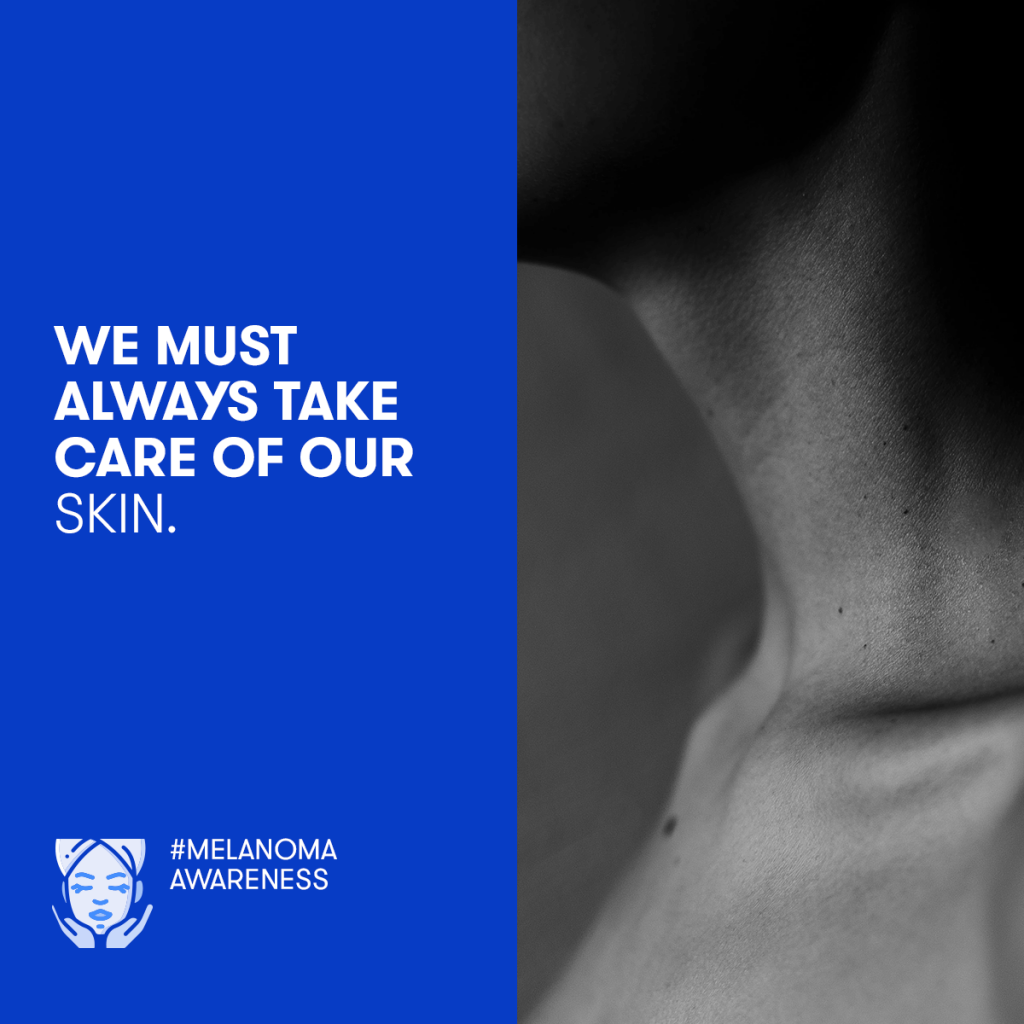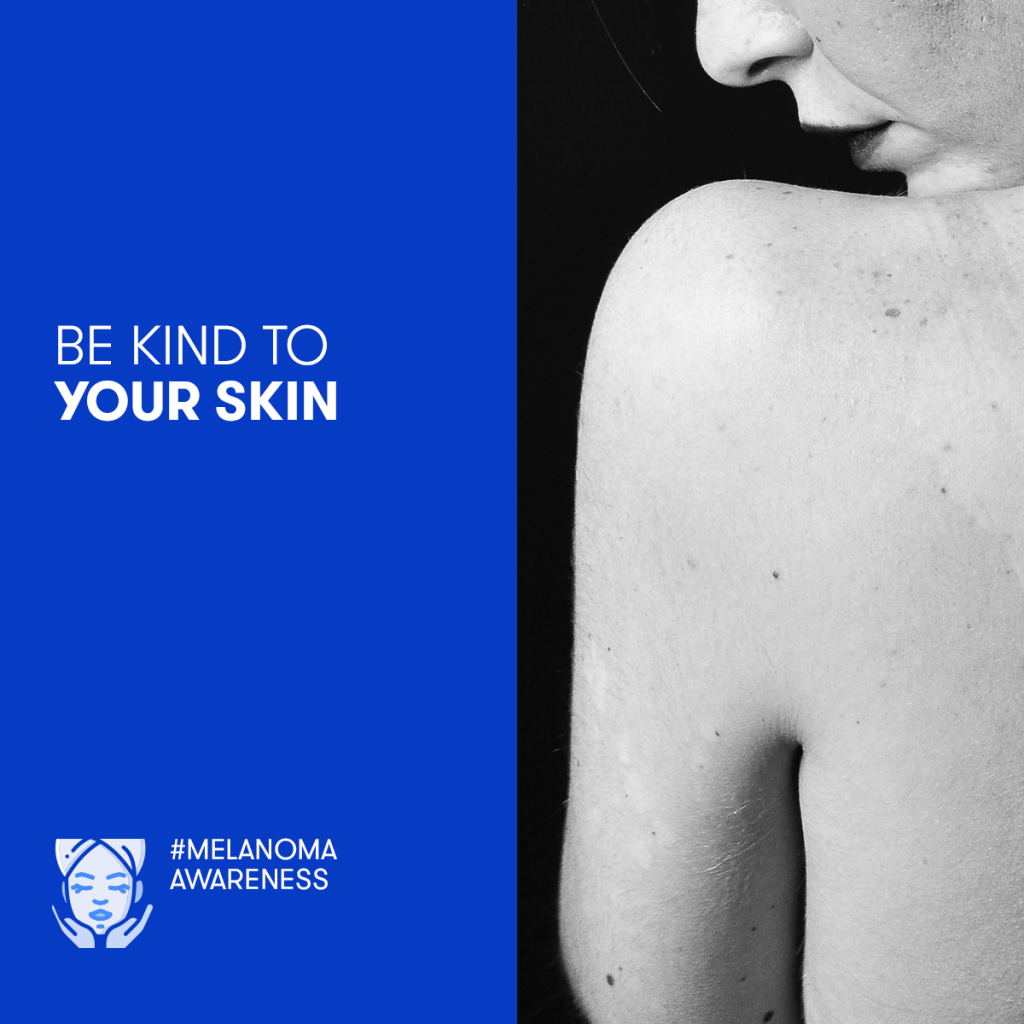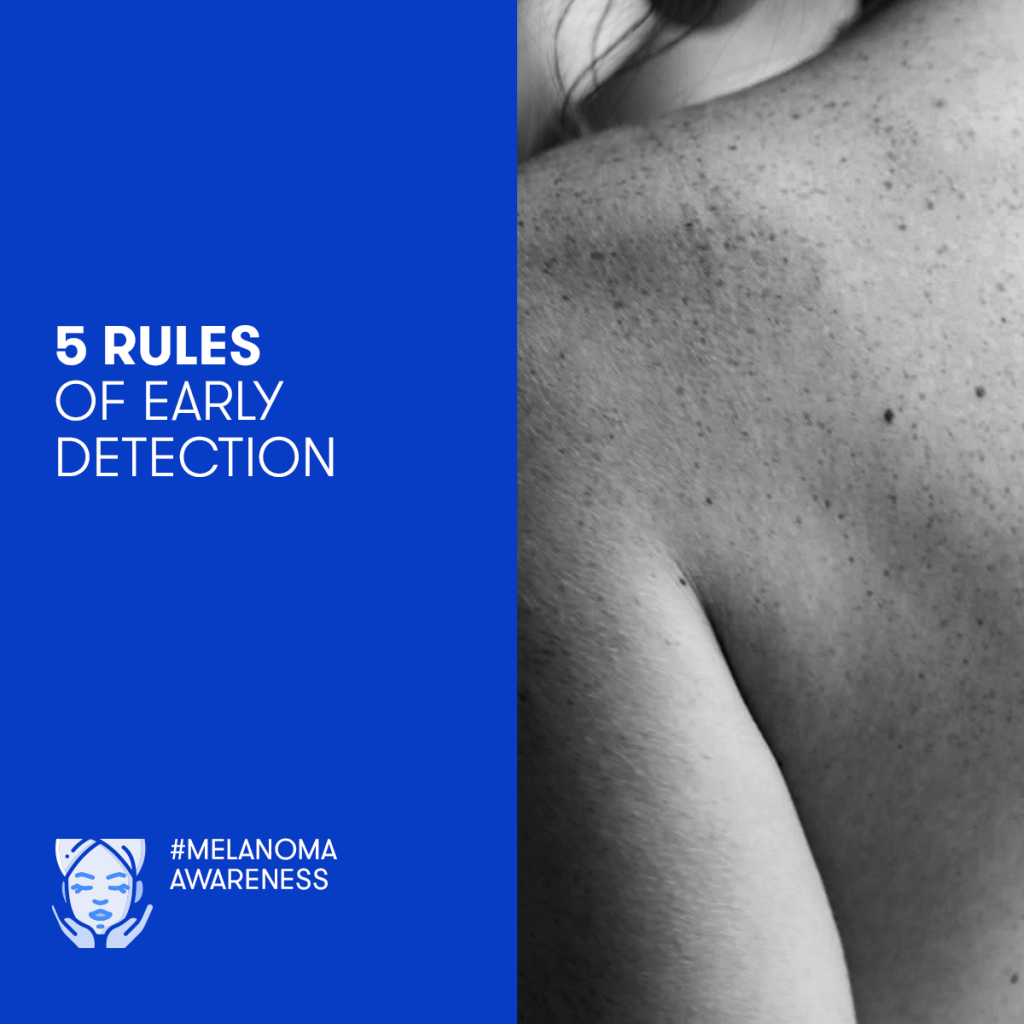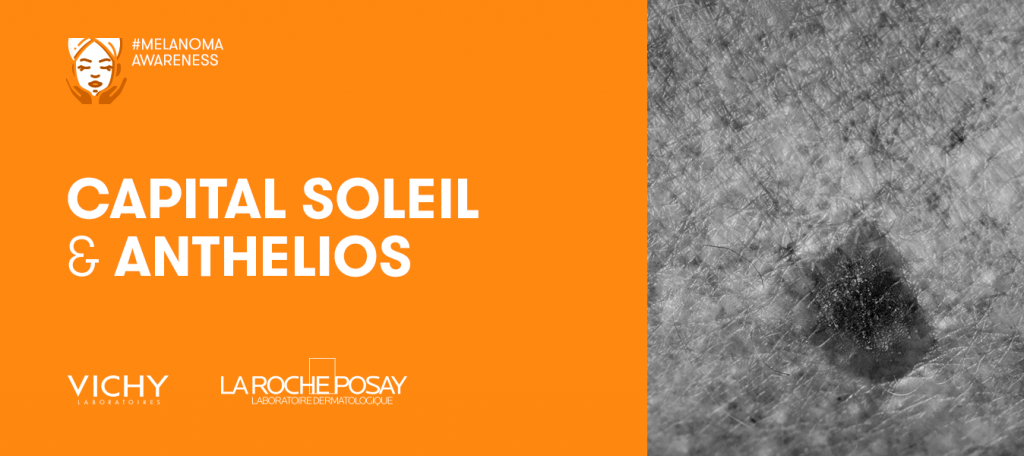Sunshine is essential to life, and it feels good on our skin. However, the sun is also harmful to the skin, so we must protect it more during these hotter months.
Exposure to the sun’s rays can result in cancerous (malignant) growth of the pigment cells in the skin. These pigment cells are called melanocytes and the resulting malignant growth is melanoma. One percent of cancers occurring on the skin are melanomas. As a melanoma grows, it can spread away from the primary site and into nearby lymph nodes and other sites. When they are still at their initial stages, they may be removed surgically and then require no additional treatment – this is why early detection is crucial.
Genetic factors, race, and age affect your chances of developing melanoma. These are factors that cannot be controlled; your exposure to the sun can.

Ultraviolet Radiation
In the spectrum of light emitted by the sun, it is the ultraviolet range that is known to cause damage to the skin.
The type of ultraviolet (UV) radiation known as UVB is the primary cause of sunburn and damage that may lead to skin cancer. UVA rays penetrate the skin more deeply. Whereas previously it was thought that UVA mainly affected skin ageing and led to premature wrinkling, recent research has revealed that it also plays a significant role in the development of skin cancer. It is thus important to use a sunscreen that blocks both UVB and UVA rays to provide sufficient protection from the sun.
Sun Protection Factor
Another thing to look at when it comes to selecting a suitable sunscreen is the sun protection factor, known as SPF. The SPF indicates how much longer it takes the UVB rays to cause erythema (reddening) of the skin that leads to sunburn. If it takes ten minutes in the sun to redden the skin, then an SPF of 15 means that it will take 15 times as long for the same reaction (150 minutes), presuming that the sun protection product has been applied properly. If spots are missed or the product is applied sparsely, there will not be enough protection. Swimming and sweating (e.g., outdoor workers, or while playing sport) will start to reduce coverage and will require more frequent re-applying of the product. Waterproof sunscreens also need to be re-applied if you have been in the water for over half an hour.

Since most people do not apply enough sunscreen and some of it washes or rubs off with time, scientists recommend reapplying any sunscreen every 2 hours during exposure to ensure protection.
ABCDE – Early detection starts with you
Primary prevention is reducing exposure to UV radiation from the sun and avoiding the use of indoor tanning devices. Secondary prevention includes methods of early detection (ABCDE melanoma checklist).

Check your moles with the list as follows:
Asymmetry – if you draw a line down the middle, would both halves look the same? If the answer is no, then your mole is asymmetrical and you should get it checked out by your dermatologist.
Border irregularity – a regular mole often has smooth borders, whereas irregular hard-to-define borders may indicate a melanoma.
Colour variation – if the mole appears to have several shades of colour that are unevenly distributed, this may indicate a melanoma.
Diameter larger than 6 mm – ‘D’ is also used for ‘different’: a mole that appears to differ from the person’s other lesions or moles.
Evolving or changing – a mole that has been stable for some years suddenly changes in shape, size, colour, shape, or structure should be checked.
What does sunscreen do?
Sunscreen works by absorbing or blocking UV rays through a combination of physical and chemical properties. Certain inorganic chemicals, such as titanium oxide, are used for their properties of reflecting UV radiation from the skin. Other organic ingredients have a chemical reaction with radiation before it penetrates the layers of the skin and absorbing the rays. As this chemical reaction occurs, the sunscreen is slowly broken down and energy is released as heat.
Choose the right sunscreen
La Roche-Posay’s Anthelios range includes fluids, mists, gel-creams, and creams for the face in tinted, non-tinted, and corrective formats, for dry as well as oily skin types. The body range includes gel, lotion, and spray – now with an eco-conscious biodegradable option. The children’s range includes a wet skin gel and easy-application spray option with high water resistance. All the products contain an SPF of 50+, including lip protection for sensitive lips. All these sunscreens target both UVA and UVB rays.
Vichy’s Capital Soleil range includes nifty 3-in-1 options for the face: one option to even, correct and protect the skin and another with an anti-wrinkle option that improves elasticity and radiance while providing SPF 50+ and blocking both UVA and UVB rays. Other face products cater for dry or oily skins for comfortable wear. The body range includes a new Eco-Milk sunscreen that is biodegradable and contains hyaluronic acid for extra hydration during exposure to the sun. Protective waters enhance your tan with beta carotene while hydrating your skin and protecting it from harm.

Sources:
Cancer.Net Editorial Board. August 2020. Accessed at: Melanoma: Latest Research | Cancer.Net
Sarnoff, D. Sun Protection. Skin Cancer Foundation. February 2019. Accessed at: Sun Protection – The Skin Cancer Foundation
Pietrangelo, A. Potter, D. Everything You Need to Know About Melanoma. Healthline. May 8, 2020. Accessed at: Melanoma: Pictures, Stages, Treatment, Survival Rate, and More (healthline.com)
Isguven, S. How Does Sunscreen Protect You? May 2012. Accessed at:
How Does Sunscreen Protect You? – Yale Scientific Magazine
Jin, Q. DermNet NZ. June 2019. Accessed at: ABCDEs of melanoma | DermNet NZ

